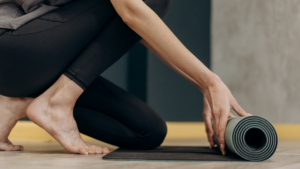Anxiety is more than just a feeling of worry or unease—it can also manifest in physical symptoms that impact our daily lives. From rapid heart rate to muscle tension, these physical manifestations of anxiety can be distressing and debilitating. In this article, we’ll explore the various physical symptoms of anxiety, how they manifest, and strategies for managing them effectively.
Recognizing the Physical Symptoms
Anxiety can manifest in a wide range of physical symptoms, which may vary from person to person. Some common physical symptoms of anxiety include:
Rapid Heart Rate (Tachycardia):
One of the hallmark physical symptoms of anxiety is a rapid heart rate. When we experience anxiety, the body’s “fight or flight” response is activated, leading to an increase in heart rate as the body prepares to respond to perceived threats.
Shallow or Rapid Breathing (Hyperventilation):
Anxiety often triggers shallow or rapid breathing, known as hyperventilation. This can lead to symptoms such as shortness of breath, chest tightness, and dizziness.
Muscle Tension and Pain:
Anxiety can cause muscles to tense up, leading to symptoms such as muscle stiffness, tension headaches, jaw clenching, and body aches and pains.
Digestive Issues:
Many people experience digestive symptoms when they’re anxious, such as stomach cramps, nausea, diarrhea, or constipation. This is because anxiety can affect the function of the digestive system, leading to changes in gut motility and sensitivity.
Sweating:
Anxiety often triggers the body’s natural cooling mechanism, leading to sweating or perspiration, even in the absence of physical exertion or heat.
Trembling or Shaking:
Some individuals may experience trembling or shaking hands, legs, or voice as a result of heightened anxiety levels.
Fatigue and Weakness:
Chronic anxiety can be exhausting, leading to feelings of fatigue, weakness, and lethargy. This can impact daily functioning and quality of life.
Understanding the Mind-Body Connection
The physical symptoms of anxiety are not just random occurrences—they are deeply interconnected with our thoughts, emotions, and physiological responses. When we experience anxiety, the brain perceives a threat and activates the body’s stress response system, triggering a cascade of physiological changes designed to prepare us for action.
This mind-body connection means that addressing the underlying causes of anxiety—such as stress, worry, or unresolved emotions—can help alleviate physical symptoms. Similarly, managing physical symptoms through relaxation techniques, breathing exercises, and lifestyle modifications can have a positive impact on our mental and emotional well-being.
Strategies for Managing Physical Symptoms
Managing physical symptoms of anxiety requires a holistic approach that addresses both the mind and body. Here are some strategies to help alleviate physical symptoms:
Deep Breathing Exercises:
Practice deep breathing exercises to calm the nervous system and reduce symptoms of hyperventilation. Focus on slow, diaphragmatic breathing, inhaling deeply through the nose and exhaling slowly through the mouth.
Progressive Muscle Relaxation:
Practice progressive muscle relaxation techniques to release tension and reduce muscle stiffness. Starting from your toes and working your way up to your head, systematically tense and relax each muscle group in your body.
Mindfulness Meditation:
Engage in mindfulness meditation to cultivate present-moment awareness and reduce anxiety-related symptoms. Mindfulness practices can help break the cycle of worry and rumination, promoting relaxation and emotional well-being.
Regular Exercise:
Incorporate regular exercise into your routine to reduce stress and tension in the body. Aim for at least 30 minutes of moderate-intensity exercise most days of the week, such as walking, jogging, cycling, or yoga.
Healthy Lifestyle Habits:
Prioritize healthy lifestyle habits such as getting adequate sleep, eating a balanced diet, limiting caffeine and alcohol intake, and staying hydrated. These habits can support overall well-being and help manage symptoms of anxiety.
View this post on Instagram
A post shared by Chloe Bellerby | Mental Health Advocate 🌻 (@chloebellerbymh)
The physical symptoms of anxiety are a tangible manifestation of the mind-body connection, reflecting the interplay between our thoughts, emotions, and physiological responses. By recognizing and understanding these symptoms, we can take proactive steps to manage anxiety and improve our overall well-being. Through relaxation techniques, mindfulness practices, regular exercise, healthy lifestyle habits, and seeking professional help when needed, we can alleviate physical symptoms and cultivate greater resilience and peace of mind in our daily lives. Remember, you are not alone, and support is available to help you navigate the challenges of anxiety with compassion and courage.
Source Credits: chloebellerbymh
Also Read: The Intricate Link Between Hormones and Gut Health






